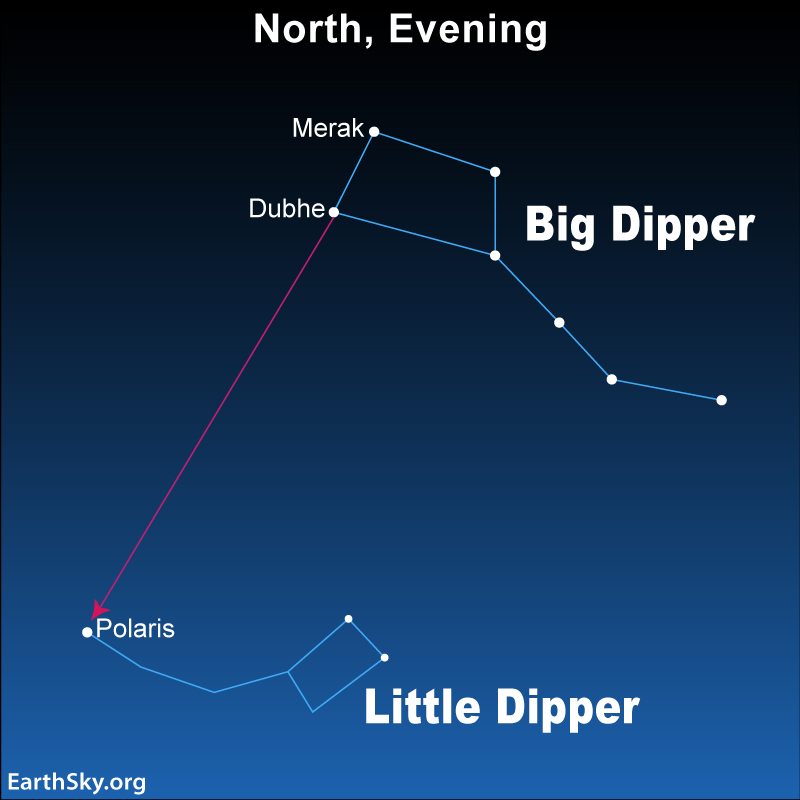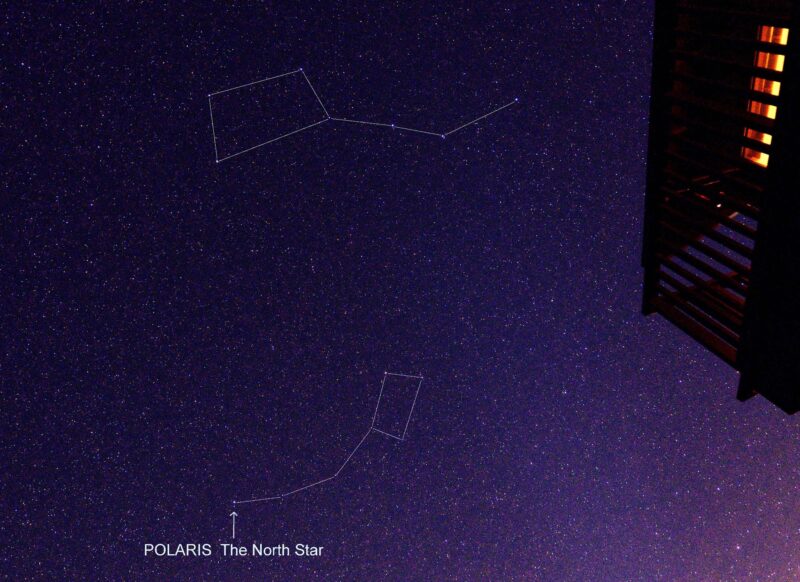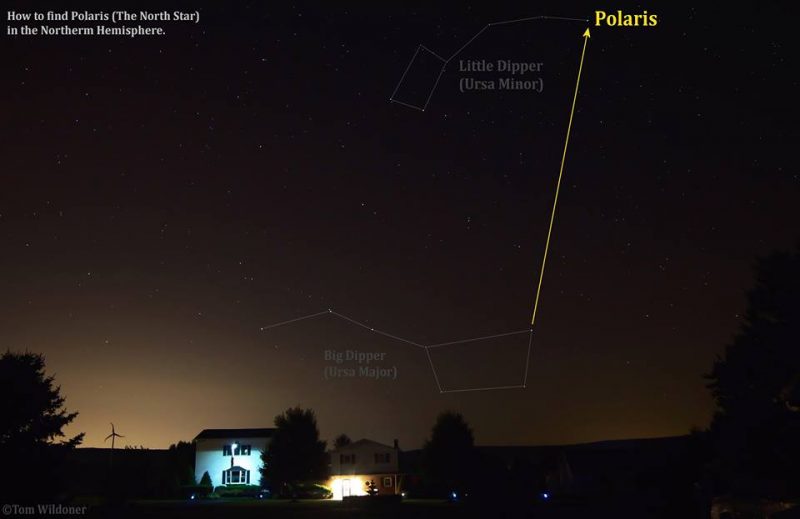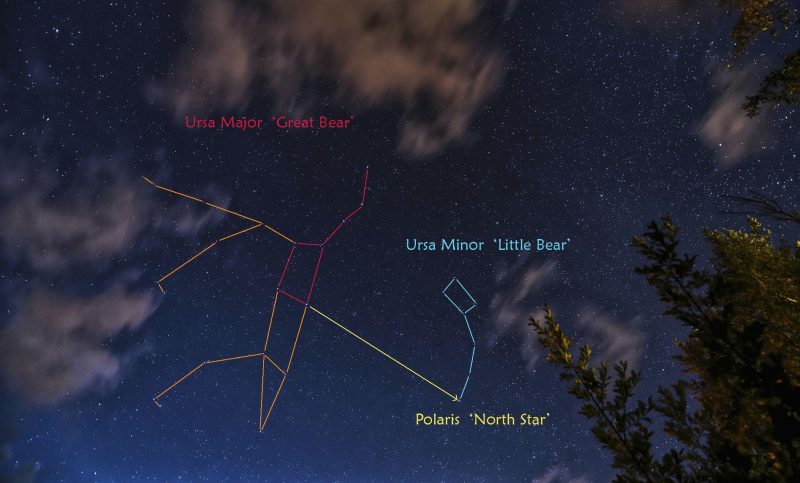
Big Dipper points to Polaris and Little Dipper
The Big Dipper – called the Plough in Ireland and the U.K. – is easy to spot. You’ll find it high in the north on April evenings. Notice the Dipper has two parts: a handle and a bowl. The two outer stars in the Big Dipper’s bowl are sometimes called the Pointers because they point toward Polaris, the North Star.
And once you find Polaris you can easily find the Little Dipper. Why? Because Polaris is located at the end of the Little Dipper’s handle.
Many people say they can spot the Big Dipper easily, but not the Little Dipper. That’s because the Little Dipper’s stars are fainter, and its dipper pattern is less dipper-like than its larger neighbor. So the best way to find the Little Dipper is to use the Big Dipper as a guide.
Still can’t see the Little Dipper? Try looking in a darker sky.
In addition, it should be noted that the Big and Little Dippers aren’t constellations. Actually, they’re asterisms, or noticeable patterns on the sky’s dome. The Big Dipper belongs to the constellation Ursa Major, the Great Bear. The Little Dipper belongs to the constellation Ursa Minor, the Smaller Bear or Lesser Bear.
Polaris marks the North Celestial Pole
Now, about the star Polaris. It’s special because Earth’s northern axis points (nearly) to its location in the sky. In fact, it’s the star around which the entire northern sky appears to turn.
Polaris is currently less than a degree away from the true north celestial pole on the sky’s dome. In due time, it’ll be closest to true north – less than half a degree away – in the year 2102. The change in the location of the celestial pole with respect to Polaris is due to a motion of Earth called precession. This motion causes Earth’s axis to trace out a circle among the stars every 26,000 years.
Polaris wasn’t always the North Star. Thousands of years ago, it was an ordinary star in the northern sky, known to the Greeks by the name Phoenice. Slowly, over eons of time, the north celestial pole moved closer to Polaris.
Moreover, other ordinary stars in the northern sky have also had the honor of being the pole star, aka the North Star. That includes Kochab and Pherkad, the two outermost stars in the bowl of the Little Dipper (see chart above).
Previously, Kochab and Pherkad served as twin pole stars from about 1500 BCE to about 500 BCE.
And they’re still sometimes called the Guardians of the Pole.
Kochab is located about 130 light-years away. Pherkad is more distant, at about 480 light-years by some estimates. Meanwhile, Polaris is a bit more than 400 light-years away.
No matter the orientation of the Big Dipper in the sky, which differs according to the time of night and season of the year, the pointer stars always point to the Little Dipper.
Photos from the EarthSky community



Bottom line: The Big Dipper is usually pretty easy to find, but the Little Dipper is less obvious. Find out how to use the Big Dipper to find Polaris and the Little Dipper. Plus, meet two former pole stars, Kochab and Pherkad.
EarthSky astronomy kits are perfect for beginners. Order today from the EarthSky store











